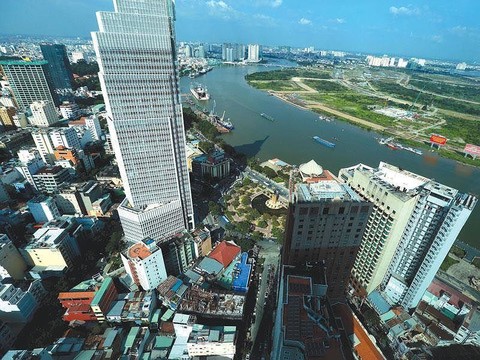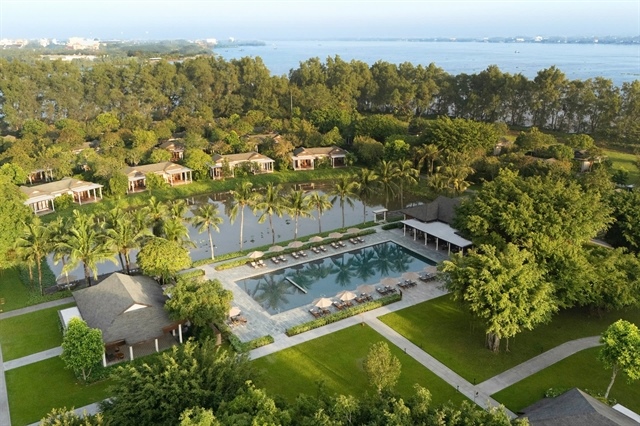Setting standards for mid-end apartments
Setting standards for mid-end apartments
2017 witnessed an upward trend in the mid-end residential segment, which is forecasted to continue to grow in 2018.

According to the Ho Chi Minh City Department of Construction, a total of 37,502 apartments were rolled out in Vietnam’s business hub in 2017, of which the mid-end and affordable segments contributed 74.6 per cent. The mid-end segment accounted for 45.5 per cent with 19,509 units, an increase of 16.4 per cent year-on-year. Meanwhile, the affordable segment made up 29.1 per cent with 12,495 units, up 67.3 per cent year-on-year.
According to CBRE Vietnam, the Hanoi real estate market had 35,000 new apartments for sale in 2017. The mid-end and affordable segments dominate the market with 80 per cent of the new supply. In 2017, the market recorded 23,000 successful transactions, up 12 per cent against 2016.
“The residential housing market witnessed a shift in homebuyers’ preferences. Despite not being in prime locations, some projects have been snapped up by homebuyers due to their good investment value, improved design, and on-site amenities. In the first quarter of the launch, these projects recorded healthy take-up rates of over 70 per cent,” said Duong Thuy Dung, senior director of CBRE Vietnam.
She predicted that housing prices and absorption rates will rise across all segments in 2018, especially those built by prestigious developers in the mid-end segment with good quality, and full amenities. The mid-end segment carrying a price tag of VND1-2 billion ($44,000-88,100) per unit has been consistently leading the market due to high liquidity.
On the investment side, Bui Nguyet Nga, deputy director of Van Thai Land, said that the company focuses on the mid-end and affordable segments to serve the genuine demand of homebuyers. As they place high value on sharing benefits with customers, many of their mid-end and affordable projects have been welcomed by homebuyers when the market was sluggish in 2013-2014 and robust in 2016-2017.
Standards for mid-end aparments
According to Duong Duc Hien, director of Residential Sales at Savills Hanoi, the standards for mid-end apartments include location, scale, design, price, as well as handover requirements. The projects need not be located in the central business districts, as Tier 2 districts suffice.
“In the fourth quarter of 2017, over 50 per cent of the new supply was in the east of Hanoi from Khuat Duy Tien and To Huu streets to Thang Long Boulevard and Highway 32,” he said.
Luxury projects have their own swimming pools, smart parking, and a full suite of on-site amenities. Meanwhile, mid-end projects do not have top-notch amenities and sophisticated design. Development expenses will increase with more complex design details, so most mid-end projects are not built on innovative ideas.
With regards to handover requirements, Hien said that a typical apartment is composed of a bed room, living room, kitchen, and bathroom. However, high-end apartments are equipped with luxury bathroom fixtures from Kohler and TOTO, while a mid-end apartment has mid-range products.
Nguyen Hoai An, director of Professional Services at CBRE Vietnam’s Hanoi Branch, said that the difference between two segments lie in quality, the number of amenities, number and speed of elevators, number of units and storeys, as well as the brand of the on-site supermarket. The price of mid-end apartments ranges from VND20-30 million ($880-1,320) per square metre. Two-bedroom apartments are quite common with a living space of 60-70sq.m per unit, while three-bed room apartments are designed with a living space of 90-100sq.m.
A wave of investment
Real estate companies have been increasingly developing mid-end products to meet the robust demand in the market. Such projects are mainly located in the suburban area with low land prices and almost completed infrastructure connecting with radial lines and ring roads.
Notable developers in Hanoi include Hateco JSC with Hateco Apollo in South Tu Liem District and Hateco Hoang Mai in Hoang Mai District. Hanoi Export-Import JSC (Geleximco) has invested in An Binh City in North Tu Liem District, as well as Gemek Tower and Gemek Premium in Hoai Duc District. Lung Lo 5 Investment and Development JSC is also developing WestPoint in Hoai Duc District.
In Ho Chi Minh City, the wholly-owned South Korean company IDE Vietnam has injected VND1 trillion ($44 million) into the Green Town Binh Tan project housing 1,100 apartments with the starting price of VND16.5 million ($726) per sq.m.
Hwang Byung-Lak, chairman of IDE Vietnam, said that Vietnam has a young, growing population with an increasing demand for housing. Mid-end apartments are dominating the real estate market, making it ideal for Green Town Binh Tan.
He added that the company will commence the handover in the fourth quarter of 2018 with 1,100 apartments, 11,000sq.m of greenery, and a wide range of amenities like swimming pools, parks, and shopping malls. All apartments have new flooring with wood in the bedroom, imported wooden kitchen cabinets, bathroom fixtures, as well as hallway.
Staying on top in 2018
Hien from Savills Hanoi is upbeat about the outlook of the mid-end segment in 2018. He said that mid-end apartments will lead the market this year due to the high demand from medium-income earners. The mid-end segment is also an attractive property investment channel with healthy rental yield.
“Mid-end apartments are a preferable option for tenants who cannot afford buying houses, which has been the trend driving the market in recent times,” said Hien.
Le Hoang Chau, chairman of the Ho Chi Minh City Real Estate Association, said that the city will take steps to solve the imbalance in supply and demand, promoting healthy and sustainable development. This reflects a shift to affordable housing to meet the genuine demand of lower- and middle-income homebuyers in the market.
“The market for apartments carrying a price tag of less than VND2 billion ($88,100) is about to become the key segment and lead market liquidity,” Chau said.



















